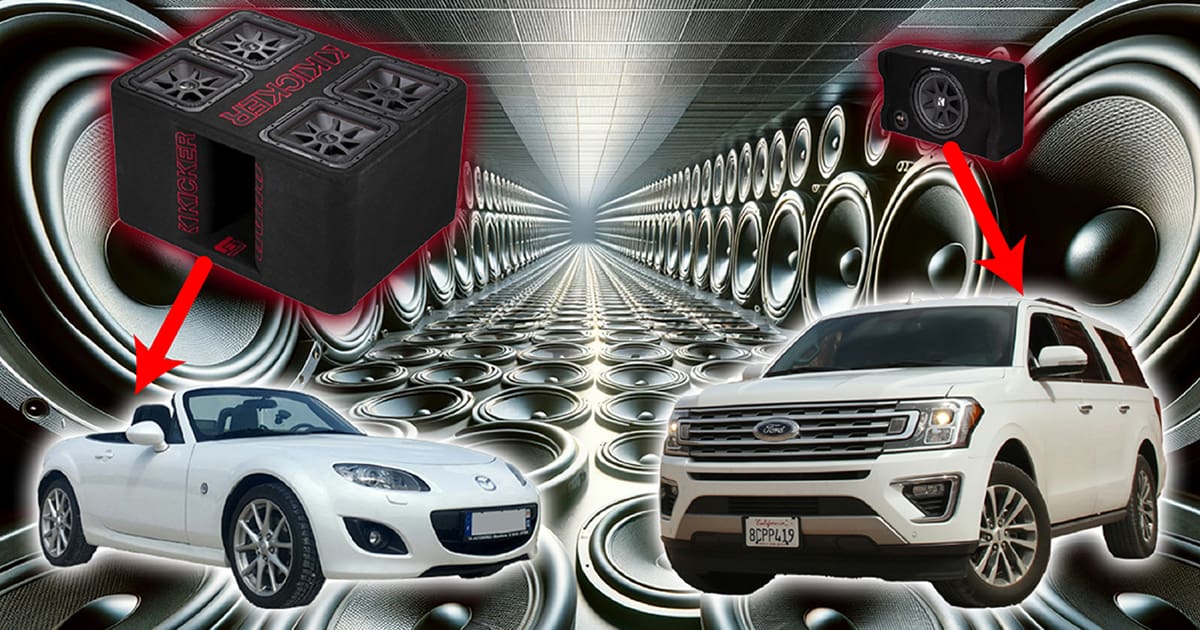We recently saw someone ask how many subwoofers they should use in their car audio system. They qualified the question by adding that cost and space weren’t issues and that their goal was to get the best sound quality from the system. This is a great question, as it ties together many considerations. Let’s look at a few benefits and drawbacks of using a single versus multiple subwoofers in a car audio system.
The Purpose of a Subwoofer System
We should spend a moment talking about the purpose of a car audio subwoofer system before we get into the details of how many subwoofers might or might not be required. Subwoofer systems are designed to reproduce bass frequencies. While the vast majority of music only has bass information down to about 40 Hz, many genres have information well below that. Ideally, a subwoofer should play down to 20 Hz with good efficiency. In reality, achieving that goal is extremely difficult.
If you’ve ever watched someone design a subwoofer enclosure and look at the simulations, you’ll know that providing significant output down to 20 cycles will be very difficult. Playing that low requires a subwoofer or several subwoofers with massive excursion capabilities. In addition, the subwoofer will need to be in a large enclosure. The resulting lack of cone control might cause problems at higher frequencies. In all, it’s a complex challenge.
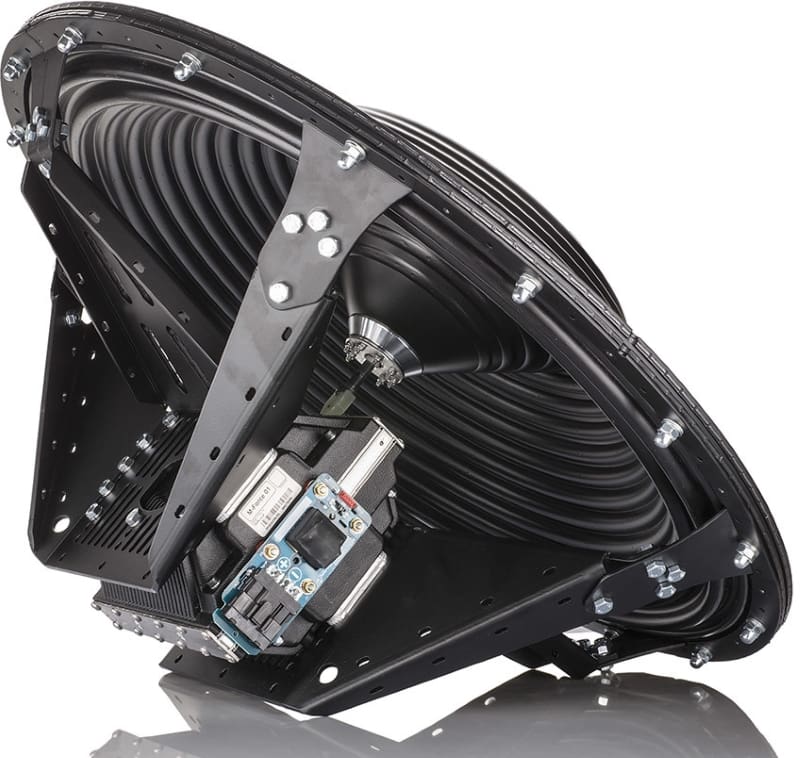
Subwoofer Systems Need Space
We’ve invested significant time researching these so-called “small box” subwoofers to determine what makes them “work” in enclosures with limited airspace. After almost 100 simulations, it became clear that nearly all modern subwoofers are “small box” designs, compared to some offerings from the ’80s that needed massive enclosures.
The simulations confirm that the amount of deep bass a subwoofer will produce depends directly on the effective cone area and the enclosure size. Cram a 12-inch subwoofer in a 0.5-cubic-foot cabinet, and you’ll likely get less deep bass than if you use an 8-inch subwoofer in the same space.
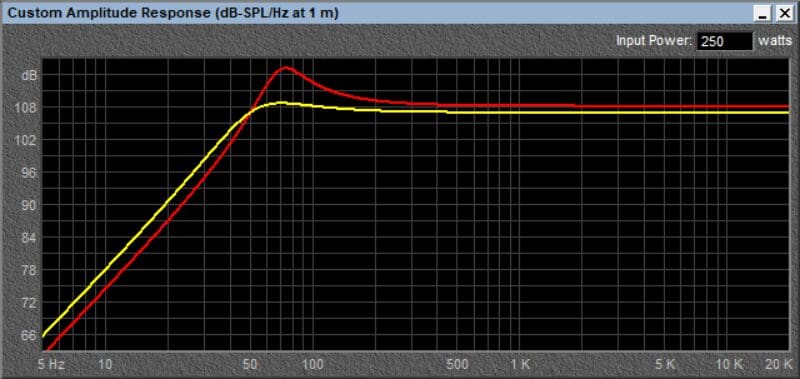
No matter what size or how many subwoofers you choose, they will need to be installed in an appropriately designed enclosure. Undersized enclosures limit low-frequency output, as we’ve shown above. You can’t get deep bass from a pair of 12-inch subwoofers if you don’t have room for a relatively large enclosure.
To put the capabilities of the 30-inch M-Force subwoofer shown above into perspective, it needs an enclosure that is about 4 feet square and 2 feet thick. With bracing and so forth, that’s around 25 cubic feet. That’s the entire cargo area of a full-size SUV – for a single driver.
Decide how much room you have for your vehicle’s subwoofer system before deciding how many subwoofers you want. The best systems are designed backward from the space you have available.
Subwoofer System Output Expectations
The second criterion in determining the number of drivers in a subwoofer system is to quantify the system’s output expectations. An 8-inch driver in a vented enclosure is likely enough for a low-cost subwoofer upgrade to add warmth and kick to a factory-installed sound system. If you want to drive around town with the windows down and shake the rearview mirror, you’ll likely need a pair of 10- or 12-inch subwoofers, at the very minimum. If your goal is to set SPL competition world records, technically, the number of subwoofers depends on the sanctioning body you’re competing in. However, you’ll need as many as you can fit with as much power as you can feed them if you want to be the loudest.
Expectations must be reasonable. Trying to get a single 10-inch subwoofer to play louder than it’s designed to typically results in its destruction. If you want the bass to be louder, you have three options. First, work with a product specialist at a local mobile electronics retailer to pick a subwoofer with greater power handling and excursion capabilities. Second, you can use larger subwoofers. Finally, you can use more subwoofers. The second and third options require a significant increase in enclosure volume. It’s also worth noting that the high-output subwoofer in the first option will need an enclosure with a larger diameter/area vent.
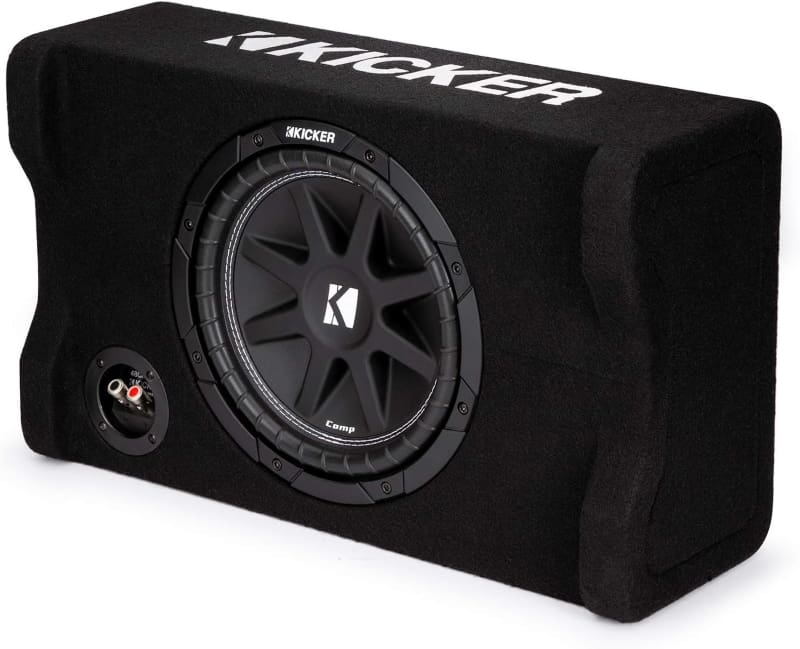
Subwoofer Sound Quality Considerations
Here’s a factor that very few consider when it comes to subwoofer system design: All speakers and subwoofers, no matter their brand, design, cost or features, add more distortion at higher excursion levels. Yes, a well-designed subwoofer might be clearer at higher volume levels than one that doesn’t have features like a shorting ring. However, both add more distortion as the cone excursion increases.
Suppose we have a goal of a subwoofer system that can deliver 114 dB of output at 50 hertz. For this discussion, we aren’t going to consider cabin gain/transfer function. If we have a single 10-inch KICKER L7S102 subwoofer in a vented enclosure, we’d need about 600 watts of power. The driver excursion at 50 hertz would be 1.5 mm in each direction. While this isn’t a lot of cone excursion, the driver is at its upper power handling limit.
What happens if you have room for a second subwoofer and an enclosure twice as large? Two of those drivers could produce that same output with only 300 watts of power, and each driver only needs to move 0.75 millimeter in each direction. That’s half the excursion, which means less distortion from the same drivers. Further, the subwoofers won’t get as hot, so power compression becomes less of an issue. If you have the room, an enclosure with more drivers is the best choice.
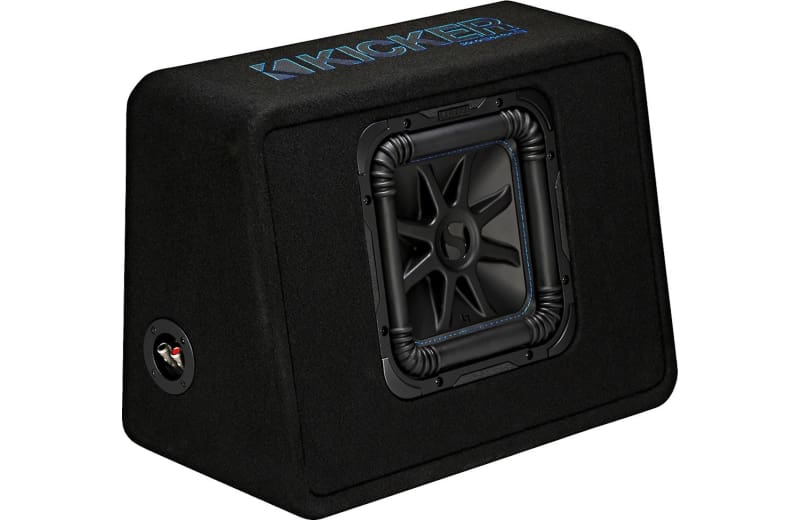
Speaker Longevity
We’ve touched on speaker longevity in both of the above criteria, but it’s worth highlighting on its own. For a subwoofer system to produce more bass, the subwoofer needs to move more air. This means it needs more power. Assuming the subwoofer has the excursion capabilities, every time you double the power to a subwoofer, it gets 3 dB louder. If you’ve chosen a subwoofer that’s too small or inefficient because it’s in a small enclosure, you’re far more likely to push it and the amplifier to their limits to get the amount of bass you want. The result is usually a destroyed subwoofer – something that isn’t covered by a manufacturer’s warranty.
If you want to listen to your system at high volume levels, you need as many subwoofers as possible in your vehicle. A side benefit is that the system won’t require as much power at lower volume levels. This eases the load on the vehicle’s electrical system. While that might translate to some fuel savings, the added weight of the subwoofers and the enclosure will offset that benefit. The reduction in the current draw will extend the life of the alternator and battery, though – so it’s quite worthwhile.
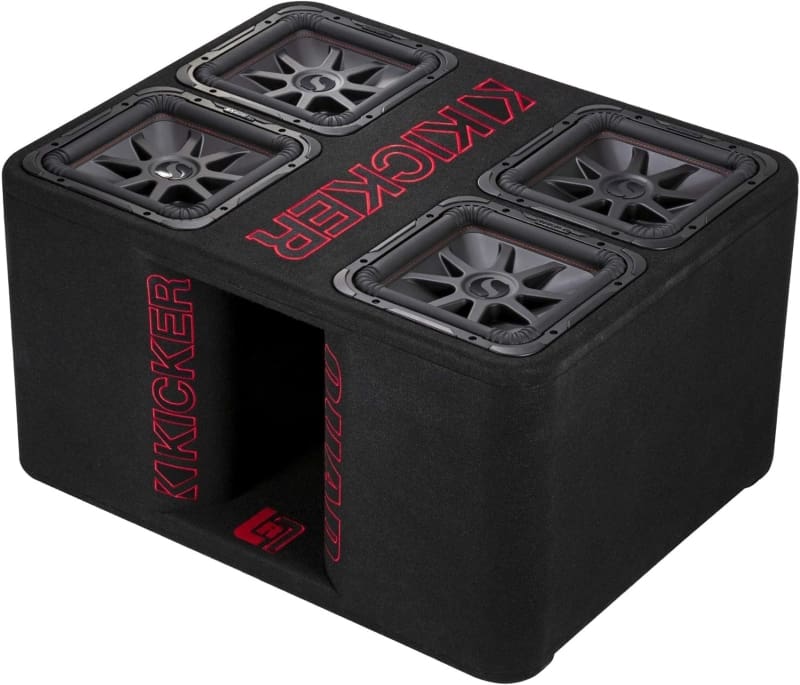
Subwoofer Size Makes a Difference
While the number of subwoofers in a car audio system matters, so does the size of the subwoofers. A 12-inch subwoofer will produce much more output for a given amount of power than an 8-inch driver. All the same, criteria we have already discussed come into play. An 8-inch driver might need 0.8 cubic foot to hit a specific f3 target. A 10-inch driver would likely require about 1.25 cubic feet to hit the same cutoff frequency. A 12-inch driver will need around 2 cubic feet for the same output target. You pick up efficiency as the driver gets larger, meaning the amplifier doesn’t have to work as hard.
Because of space restrictions, you might find that a combination of smaller subwoofers better suits your application. A single 12 might provide the ideal amount of bass for your needs, but if the enclosure can only be 11 inches tall, then a pair of 10s could be a better choice. As we said at the beginning, it’s best to have the shop you’re working with suggest subwoofers based on your available space.
The Myth of Subwoofer Speed
One thing to ignore is the myth that small subwoofers produce tighter, faster bass. This isn’t a concern unless you’re trying to use them as a midbass or midrange speaker. Between 60 and 100 hertz, most car audio subwoofers are the same regarding response. You might get a little more deep bass from one versus another in a specific application. Many people confuse this with the presence of more upper bass content. Scientifically, so long as the cone isn’t extremely heavy and the voice coil inductance isn’t significant, an 18-inch subwoofer is just as “fast” at 80 hertz as an 8-inch sub. Those crazy 3,000-watt plus SPL subwoofers are different.
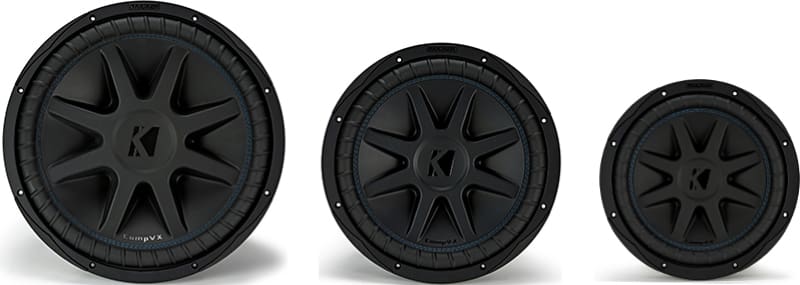
How Many Subwoofers Does My Car Stereo Need?
The physics of using moving coil subwoofers to produce bass frequencies is carved in stone. No magic design will defy the relationship between subwoofer cone area, enclosure volume and low-frequency output. As such, you need to work with a local specialty mobile electronics retailer to quantify your expectations, determine your available space and choose a subwoofer solution to provide the amount of output you want in that space.
This article is written and produced by the team at www.BestCarAudio.com. Reproduction or use of any kind is prohibited without the express written permission of 1sixty8 media.
